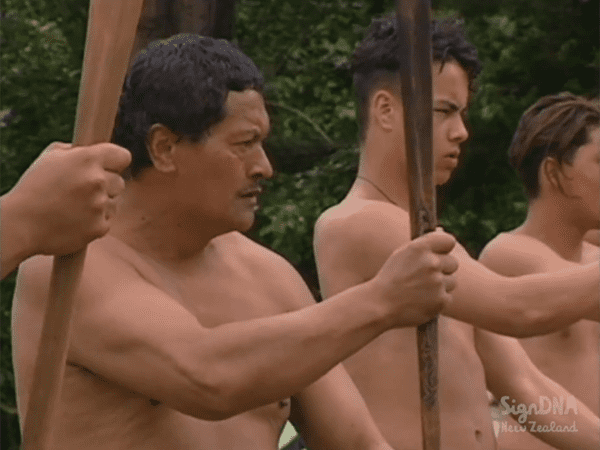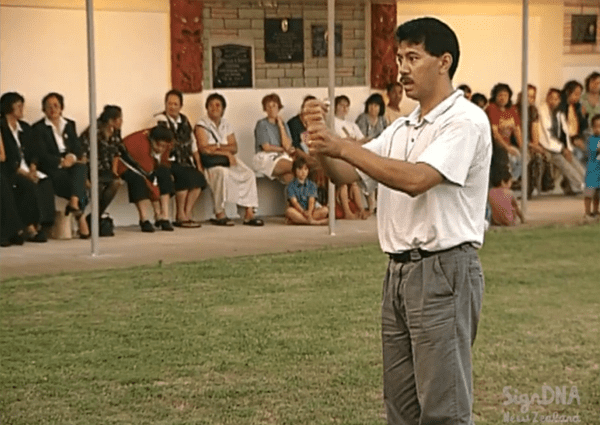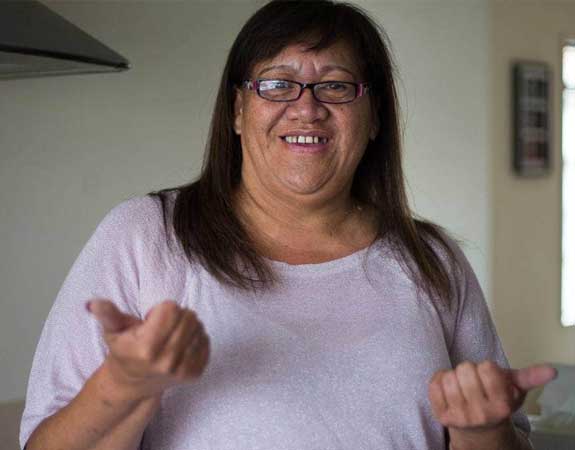
2022
article – Taonga source: The Northern Advocate
Northland marae set up te reo and deaf sign programmes to grow national languages
Twenty marae across Northland want to grow the number of whānau who can speak te reo Māori ... in sign language. An eight week course, He Aha, is about to get under way to help whānau improve communication with tangata turi.


2023
article – Taonga source: NZ Herald.
Whaikaha the first ministry with a name in all of NZ’s official languages
Whaikaha – Ministry of Disabled People has become the first and only government ministry with a name in all three of New Zealand’s official languages.


1996
video – Taonga source: Television New Zealand Archive
John Rua participates in a taiaha course
John Rua participates in an annual taiaha course and as a participant, he leads a pōwhiri, welcoming the visitors. ‘Te Karere’ visits the course to film John and find out more from his course instructors.


1997
video – Taonga source: Television New Zealand Archive
Hunga Turi: Māori Deaf have their first accessible stay on a marae
‘Te Karare’ was present to witness members of the Māori Deaf community have their first accessible stay on Kokohinau marae.


2017
article – Taonga source: Stuff
Bringing te reo to deaf Māori
Māori concepts like tikanga, iwi and kaumātua don't exist in English-based sign language. And it means deaf Māori have been deprived of their culture, Hamilton-based interpreter Stephanie Awheto said. But that's changing, albeit slowly.


2011
video – Taonga source: Deaf Aotearoa New Zealand
God Defend New Zealand: New Zealand National Anthem in NZSL, Maori & English
In NZSL with subtitles in Māori and English; created in collaboration with native speakers of NZSL, Māori & English, and sign language linguists from the Deaf community, with the purpose to create a NZSL translation that was true to the meaning behind the Māori & English lyrics.

